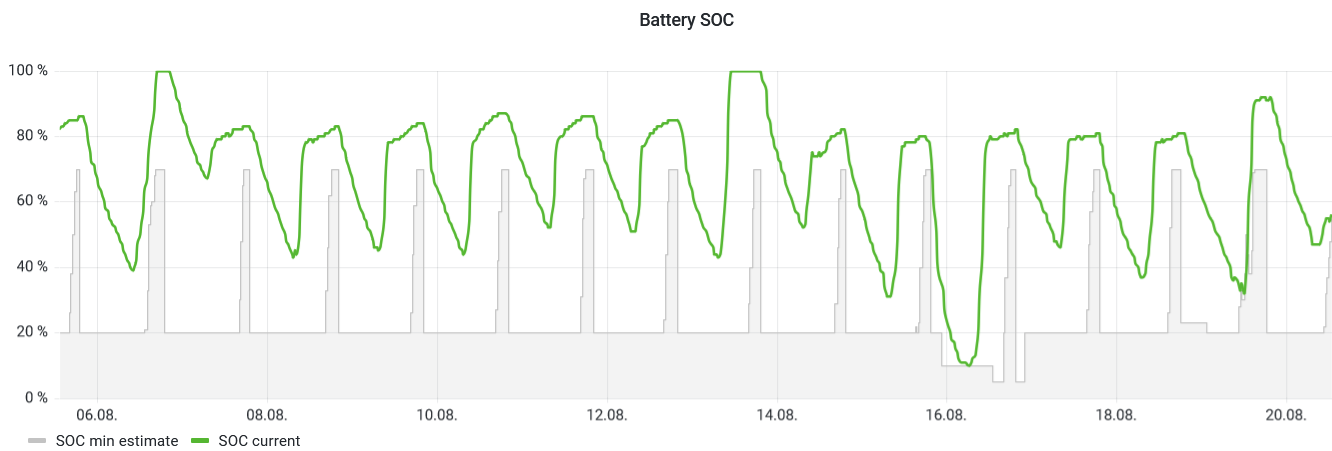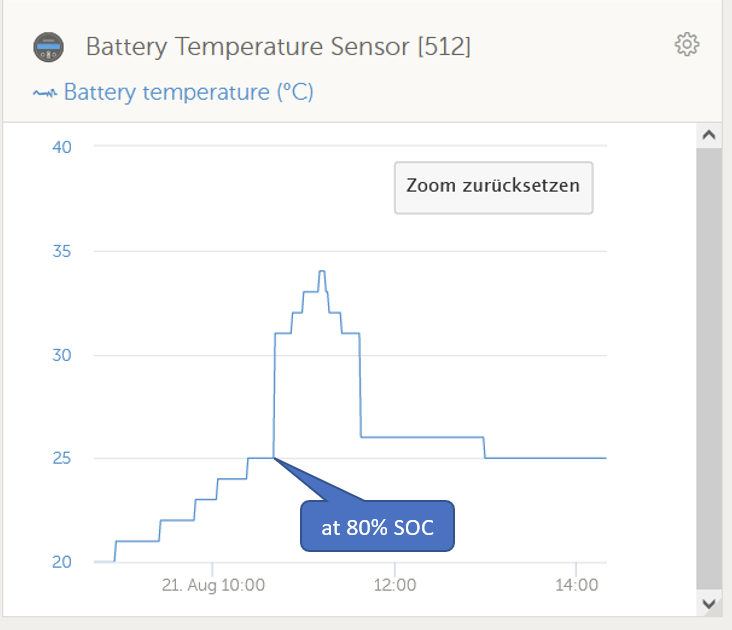In an DVCC/ESS controled system using Lifepo4 batteries it is not good to charge the cells over 90% SOC in daily operation (you should just do it for top balancing).
As the voltage does not reflect the SOC in a wide range of lifepo4 charge curve, it would be usefull to have a configurable value in the ESS menue for the maximum SOC. As soon the SOC is reached the CVL should be lowered to a configurable value. Charging shall be stoped.



